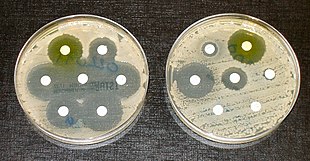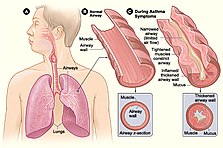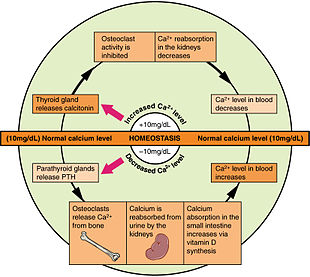We're for all- ALL are for us for the greater interest of Humanism-Truth-Facts-Friendship-Unity-Participation including Physico-Mental Sound Health with Spirituality, enrichment through ''TOTAL HEALTH SOLUTION'' to a Well-furnished GOALofTruth alloted for all in real sense ;
From wikipedia & other reliable sources ( Poets, Writers, Thinkers, Researchers, Free Lancers, Philosophers, Theologists, Scientists, Orators, Sociologists and Photographers +Artists-Musicians & etc.) we can learn as follows :
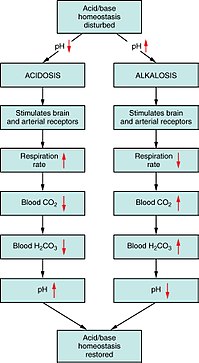
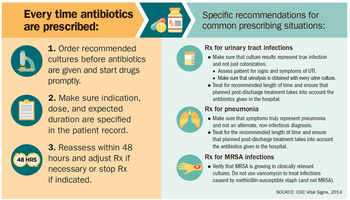
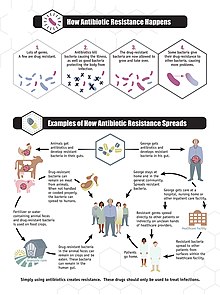
''A biological system is a complex network which connects several biologically relevant entities. Biological organization spans several scales and are determined based different structures depending on what the system is.[1] Examples of biological systems at the macro scale are populations of organisms. On the organ and tissue scale in mammals and other animals, examples include the circulatory system, the respiratory system, and the nervous system. On the micro to the nanoscopic scale, examples of biological systems are cells, organelles, macromolecular complexes and regulatory pathways. A biological system is not to be confused with a living system, such as a living organism.
These specific systems are widely studied in human anatomy and are also present in many other animals.
- Respiratory system: the organs used for breathing, the pharynx, larynx, bronchi, lungs and diaphragm.
- Digestive system: digestion and processing food with salivary glands, oesophagus, stomach, liver, gallbladder, pancreas, intestines, rectum and anus.
- Cardiovascular system (heart and circulatory system): pumping and channeling blood to and from the body and lungs with heart, blood and blood vessels.
- Urinary system: kidneys, ureters, bladder and urethra involved in fluid balance, electrolyte balance and excretion of urine.
- Integumentary system: skin, hair, fat, and nails.
- Skeletal system: structural support and protection with bones, cartilage, ligaments and tendons.
- Endocrine system: communication within the body using hormones made by endocrine glands such as the hypothalamus, pituitary gland, pineal body or pineal gland, thyroid, parathyroid and adrenals, i.e., adrenal glands.
- Lymphatic system: structures involved in the transfer of lymph between tissues and the blood stream; includes the lymph and the nodes and vessels. The lymphatic system includes functions including immune responses and development of antibodies.
- Immune system: protects the organism from foreign bodies.
- Nervous system: collecting, transferring and processing information with brain, spinal cord, peripheral nervous system and sense organs.
- Muscular system: allows for manipulation of the environment, provides locomotion, maintains posture, and produces heat. Includes skeletal muscles, smooth muscles and cardiac muscle.
- Reproductive system: the sex organs, such as ovaries, fallopian tubes, uterus, vagina, mammary glands, testes, vas deferens, seminal vesicles and prostate.
USAAW is an annual observance that raises awareness of the threat of antibiotic resistance and the importance of appropriate antibiotic use.
The exact components of a cell are determined by whether the cell is a eukaryote or prokaryote.[7]
- Nucleus (eukaryotic only): storage of genetic material; control center of the cell.
- Cytosol: component of the cytoplasm consisting of jelly-like fluid in which organelles are suspended within
- Cell membrane (plasma membrane):
- Endoplasmic reticulum: outer part of the nuclear envelope forming a continuous channel used for transportation; consists of the rough endoplasmic reticulum and the smooth endoplasmic reticulum
- Rough endoplasmic reticulum (RER): considered "rough" due to the ribosomes attached to the channeling; made up of cisternae that allow for protein production
- Smooth endoplasmic reticulum (SER): storage and synthesis of lipids and steroid hormones as well as detoxification
- Ribosome: site of biological protein synthesis essential for internal activity and cannot be reproduced in other organs
- Mitochondrion (mitochondria): powerhouse of the cell; site of cellular respiration producing ATP (adenosine triphosphate)
- Lysosome: center of breakdown for unwanted/unneeded material within the cell
- Peroxisome: breaks down toxic materials from the contained digestive enzymes such as H2O2(hydrogen peroxide)
- Golgi apparatus (eukaryotic only): folded network involved in modification, transport, and secretion
- Chloroplast: site of photosynthesis; storage of chlorophyll
In biology, homeostasis (British also homoeostasis) (/hɒmɪə(ʊ)ˈsteɪsɪs/) is the state of steady internal, physical, and chemical conditions maintained by living systems.[1] This is the condition of optimal functioning for the organism and includes many variables, such as body temperature and fluid balance, being kept within certain pre-set limits (homeostatic range). Other variables include the pH of extracellular fluid, the concentrations of sodium, potassium and calcium ions, as well as that of the blood sugar level, and these need to be regulated despite changes in the environment, diet, or level of activity. Each of these variables is controlled by one or more regulators or homeostatic mechanisms, which together maintain life.
Homeostasis is brought about by a natural resistance to change when already in the optimal conditions,[2] and equilibrium is maintained by many regulatory mechanisms: it is thought to be the central motivation for all organic action. All homeostatic control mechanisms have at least three interdependent components for the variable being regulated: a receptor, a control center, and an effector.[3] The receptor is the sensing component that monitors and responds to changes in the environment, either external or internal. Receptors include thermoreceptors, and mechanoreceptors. Control centers include the respiratory center, and the renin–angiotensin system. An effector is the target acted on, to bring about the change back to the normal state. At the cellular level, effectors include nuclear receptors that bring about changes in gene expression through up-regulation or down-regulation, and act in negative feedback mechanisms. An example of this is in the control of bile acids in the liver.[4]
Some centers, such as the renin–angiotensin system, control more than one variable. When the receptor senses a stimulus, it reacts by sending action potentials to a control center. The control center sets the maintenance range—the acceptable upper and lower limits—for the particular variable, such as temperature. The control center responds to the signal by determining an appropriate response and sending signals to an effector, which can be one or more muscles, an organ, or a gland. When the signal is received and acted on, negative feedback is provided to the receptor that stops the need for further signaling.[5]
The cannabinoid receptor type 1 (CB1), located at the presynaptic neuron, is a receptor that can stop stressful neurotransmitter release to the postsynaptic neuron; it is activated by endocannabinoids (ECs) such as anandamide (N-arachidonoylethanolamide; AEA) and 2-arachidonoylglycerol (2-AG) via a retrograde signaling process in which these compounds are synthesized by and released from postsynaptic neurons, and travel back to the presynaptic terminal to bind to the CB1 receptor for modulation of neurotransmitter release to obtain homeostasis.[6]
The polyunsaturated fatty acids (PUFAs) are lipid derivatives of omega-3 (docosahexaenoic acid, DHA, and eicosapentaenoic acid, EPA) or of omega-6 (arachidonic acid, ARA) are synthesized from membrane phospholipids and used as a precursor for endocannabinoids (ECs) mediate significant effects in the fine-tune adjustment of body homeostasis.
Antibiotics have been used since ancient times. Many civilizations used topical application of moldy bread, with many references to its beneficial effects arising from ancient Egypt, Nubia, China, Serbia, Greece, and Rome.[7] The first person to directly document the use of molds to treat infections was John Parkinson (1567–1650). Antibiotics revolutionized medicine in the 20th century. Alexander Fleming (1881–1955) discovered modern day penicillin in 1928, the widespread use of which proved significantly beneficial during wartime. However, the effectiveness and easy access to antibiotics have also led to their overuse[8] and some bacteria have evolved resistance to them.[1][9][10][11] The World Health Organization has classified antimicrobial resistance as a widespread "serious threat [that] is no longer a prediction for the future, it is happening right now in every region of the world and has the potential to affect anyone, of any age, in any country".[12] Global deaths attributable to antimicrobial resistance numbered 1.27 million in 2019''.[13]
We're for all- ALL are for us for the greater interest of Humanism-Truth-Facts-Friendship-Unity-Participation to a Well-furnished GOAL of Truth from which all shall have ++++;
We're indebted to WIKIPEDIA +WHO for a short while and as 'Guardian QUOTATION' from Global WISER ONE. And have quoted many images, article's, writings etc. by great & humanist writers+++ from global thinkers, Well-wishers, Wiseman, Humanists and Others Living-Nonlivings in favor of HUMANISM to share more answers of Researchers-readers+++++....
To reach the 'GOAL of FULFILNESS' unitedly to alive in the "DESTINATION of TRUTH-FACTS-CHARMEST AMICABLITY" of Natural Joyful POSSIBILITIES+++
BREAST CANCER, TUMOR, Arsenic+Chemical Poisoning, Corona, Heart-Lung diseases, Neurological-Hormonal-Immunal-Infectious diseases with related complexities are possible to cure properly-easily-scientifically-accurately (100%) by our positive medical services only with+++++balance confirming
Medicine-Food control-proper nursing-medicinal massage-Medicinal Yogas- Meditation, Physiotherapy special etc. without side effects & Repeatation as per contract through user-friendly approved ways of CURE++++. please fill our form as below or click:
After confirming contract-letter between you+++. We serve you properly with no Chemo-therapy-radiation therapy -SURGICAL Complexities (Physical-Mental) to CURE+++ upto our Limit to recover your both-health from illness.



